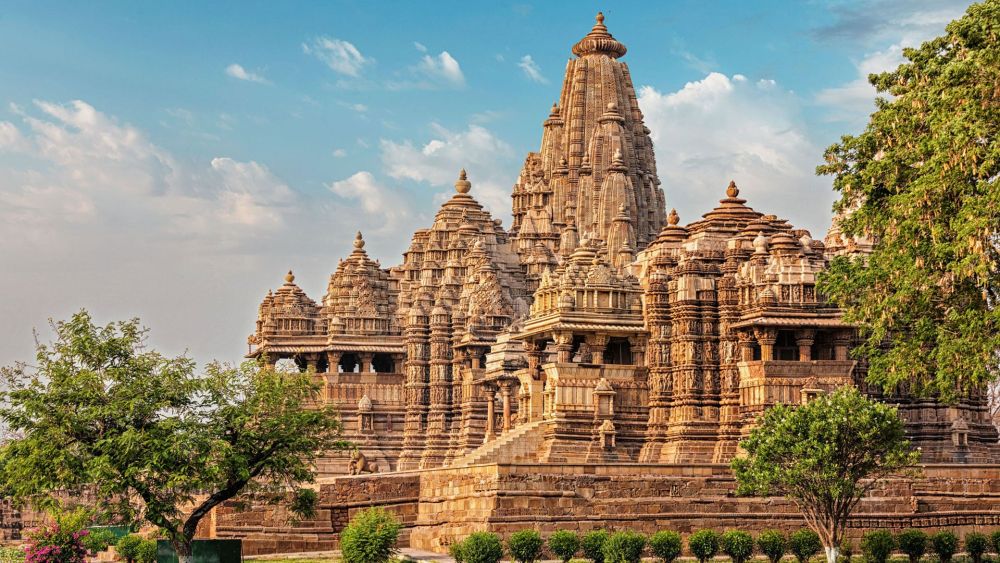

The Vishwanatha Temple is one of the spectacular monuments at the UNESCO World Heritage Site of the Khajuraho Group of Monuments in Madhya Pradesh, India. This temple is dedicated to Lord Shiva and features a magnificent Shiva Linga as the main deity. The history of the Khajuraho temples dates back to between the 10th and 12th centuries, during the reign of the Chandela dynasty. The intricate artwork and architectural brilliance reflect the pinnacle of North Indian temple architecture and the zenith of Indian classical dance and sculpture traditions.
The Vishwanatha Temple is an exemplary piece showcasing the advanced level of craftsmanship and the unique architectural style that was prevalent during the times of the Chandelas. The temple consists of several sub-structures, including an entrance gate, a main shrine (sanctum), and a Nandi pavilion hosting a massive statue of Nandi, the sacred bull of Shiva. The temple walls are adorned with numerous beautiful, erotic, and divine carvings that hold great artistic and historic importance.
Tourism in Khajuraho started gaining momentum after the site was rediscovered by British engineer T.S. Burt in the 1830s. However, it was not until the late 20th century that Khajuraho became a popular tourist destination, following its designation as a World Heritage Site in 1986. This led to significant improvements in infrastructure and facilities to cater to international and domestic visitors. The annual Khajuraho Dance Festival, which began in 1975, also played a crucial role in highlighting the region's cultural heritage and attracting followers of classical Indian dance and music.
In recent years, sustainable and experiential travel trends have impacted tourism in Khajuraho. Visitors are increasingly looking for authentic experiences that allow them to connect with local culture and history. There is also a growing emphasis on preserving the integrity of the temples, with efforts directed towards ensuring that tourist activities do not damage the ancient structures.
Moreover, digital innovations like virtual reality tours and augmented reality apps have started to enhance the visitor experience, providing immersive historical insights about the temples' past. In response to the global health situation, health and safety protocols have been implemented, and there is a stronger focus on individual and small group tours.
When planning a visit to the Vishwanatha Temple, tourists are encouraged to respect the site’s cultural importance and follow all preservation guidelines. The best times to visit are from October to March, during the cooler months. For those interested in attending the Khajuraho Dance Festival, it is typically held in February, when the region's climate is most pleasant.
Before visiting, it is advisable to check for any updates or changes in visiting hours, ticketing policies, and any travel advisories that may affect trip planning. Engaging a knowledgeable guide can greatly enrich the experience by providing in-depth historical context and pointing out subtle architectural nuances that might otherwise go unnoticed.
The Vishwanatha Temple stands as a testament to the grandeur of India’s ancient heritage and continues to enthrall visitors with its beauty and historicity. As tourism trends evolve, the site remains a focal point for those seeking to explore India's rich cultural tapestry, woven into the very stones of Khajuraho's temples.